programs and learning
Student Museum Educators (SMEs) lead preK–12 students—and at times, fellow college students—in close looking and thinking about art through guided conversation, multisensory engagement, writing, drawing and other participatory activities in the galleries. In this challenging but rewarding position, SMEs experiment with new ideas and hone a creative teaching practice as they bring their unique interests, personalities and backgrounds to their work. SMEs are supported by extensive training and coaching balanced with hands-on experience. With intentionality and care, SMEs create a provocative space that invites learners to be curious, to wonder, to play, to imagine and to explore ideas. SMEs are committed to nurturing inclusive, accessible and joyful experiences connecting art and people.
During one-hour guided visits, SMEs offer participants inquiry-based learning experiences with works of art. We promote connection with works of art by encouraging preK–12 students to look closely, ask questions and share observations and perspectives. Multisensory gallery activities may incorporate observational drawing, games, movement, writing reflection and analysis of primary sources, in addition to dynamic questioning strategies that activate critical thinking.
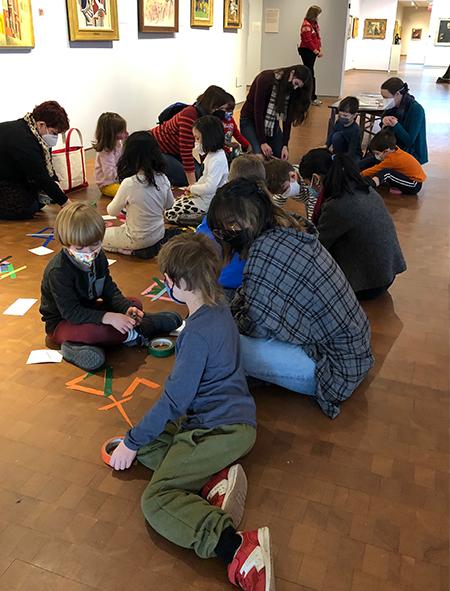
Peer-to-peer mentoring is key to the success of the SME program. We use an iterative learning model, with SMEs teaching, reflecting, coaching and being coached with and by each other. Many SMEs remain on staff at the museum for two, three or four years of their Smith experience, growing in their teaching over time.
In spring 2023, in addition to our regular school visits and our rich multivisit partnership with the Campus School of Smith College, we collaborated with local museum educator and Northampton Public Schools parent Sara Lasser Yau to bring every classroom, kindergarten through 5th grade, from Leeds Elementary School to the museum for a visit. Students from Leeds engaged in guided conversations about works of art, with transportation provided through the generosity of SCMA Members, who underwrite the museum’s bus subsidy program.
This programming was the culmination of a project with funding secured by Yau from the Northampton Education Foundation to engage students in critical thinking about works of art in their classroom and train Northampton public school teachers (including every visual arts teacher) in visual thinking strategies in a series of workshops held at SCMA.
As part of a teaching museum, SCMA educators create experiences with art that prioritize student learning and deep engagement with art and museum practice through the lens of their coursework. In 2022–2023, the museum saw 241 facilitated and self-guided academic class visits from Smith College and the Five Colleges. These students benefited from thoughtfully designed experiences that used inclusive gallery teaching methods to empower students and faculty to look carefully, think critically and harness their experiences and knowledge to connect to and interpret works of art and critique museums. Students honed their skills in sustained looking and interpretation of works of art individually and communally with their peers. The use of inclusive pedagogies ensures intellectual, physical and emotional accessibility to a wide range of learners through multimodal approaches, and maintaining a trauma-informed mindset in our teaching practice supports the needs of our audiences. The thoughtful intentionality we employ in selecting objects that represent a breadth of perspectives, identities, stories and cultures is critical to meeting the needs of classes across disciplines.
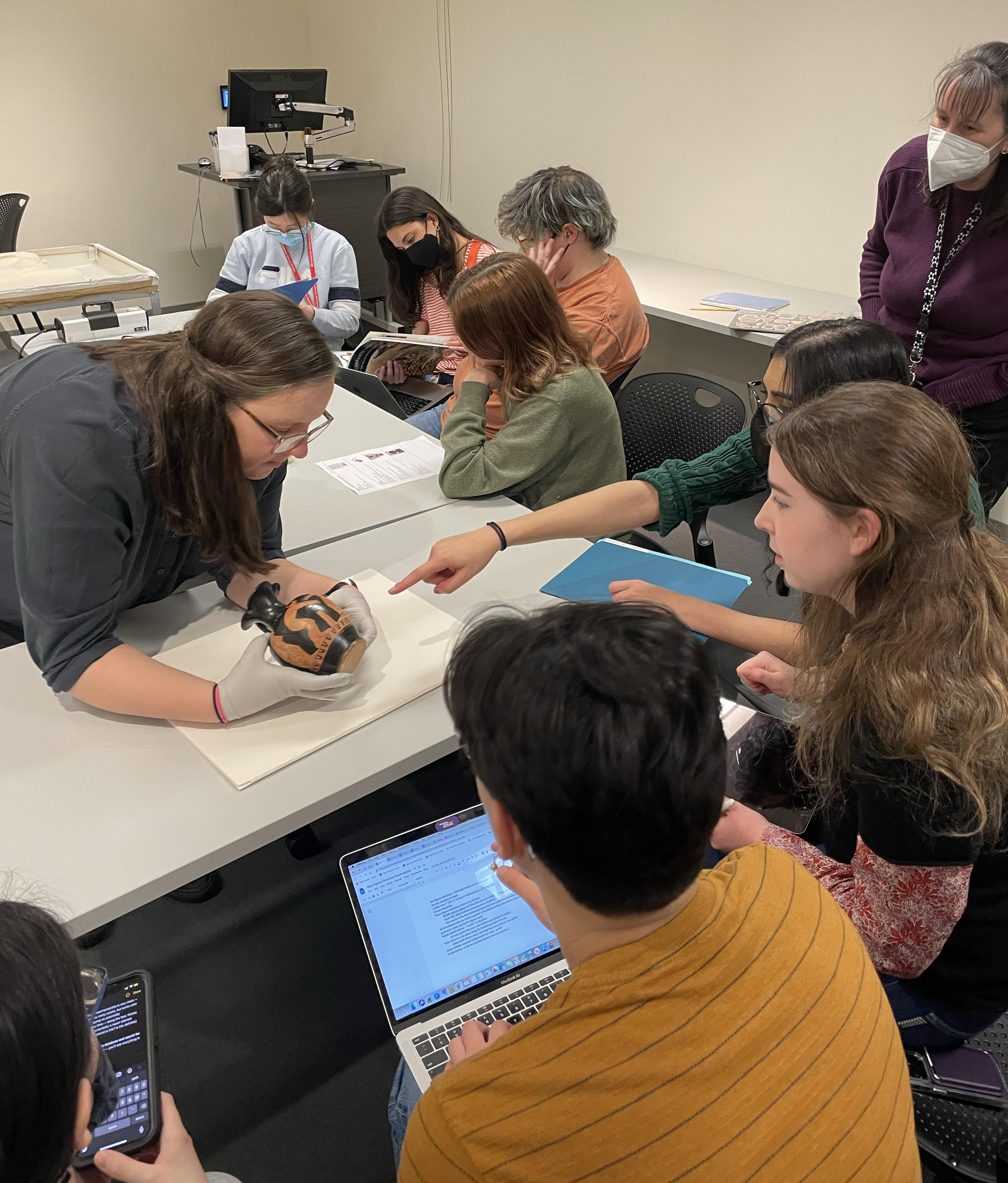
SCMA welcomed courses from 32 academic departments, including visual arts, performing arts, literature, history, social sciences, natural sciences, philosophy, foreign languages, government, humanities and gender studies. Certain topics of our contemporary moment continue to grip our collective attention on campus and in coursework. Faculty and students continue to be keenly interested in engaging with art that centers issues such as race, gender, identity, climate change/ action, activism, colonialism and power and that inspire discussion reflecting their own passions and scholarly interests.
We supported academic activity expansively using teaching spaces like the Winslow Teaching Gallery, in which the collections management staff nimbly and expertly mounted 44 installations that served 35 courses. They also brought art to the Mellon Classroom for students to examine closely and shared their expertise in conservation and display. The Cunningham Center for the Study of Prints, Drawings and Photographs remains an essential space to bring out works on paper for students to see closely and more intimately. Students also took a deeper dive into the collection by making appointments to view art in storage and examine object and research files. These activities are made possible by a collaborative team of staff in the education, curatorial and collections management departments.
Each academic year brings classes that visit the museum multiple times, some weekly. These students build on shared learning with each museum experience, delve profoundly into the museum’s collections, learn about and engage in various aspects of museum practice, and become deeply familiar with the museum. In 2022–2023, these courses included the annual offering of the very popular FYS 197 On Display: Museums, Collections, Exhibitions; ARH 291 Imperial Design; CHM 100 Chemistry of Art Objects; PHI 233 Aesthetics; THE 154 “Reading” Dress: Archival Study of Clothing; PSY 268: The Human Mind and Climate Change; and ENG 119 Writing Roundtable: Language and Power. Courses like these also serve as electives for students in the Museums Concentration (MUX).
An overall goal is to cultivate active participation and belonging in the museum. The museum remains dedicated to providing opportunities for students to gain fluency in both visual literacy and museum literacy by igniting curiosity and empowering them as critical viewers and thinkers through the power of art.
We welcomed families back to SCMA in 2022–2023 with a series of programs for early childhood audiences, with the goal of rebuilding our audiences after the disruption of the COVID-19 pandemic.
Our early childhood programming was a collaborative effort between SCMA and the Northampton Public Schools (NPS) Early Childhood department, thanks to the support of the Massachusetts Department of Early Education and Care through their Coordinated Family and Community Engagement (CFSE) grant. Gina Hall, SCMA’s Educator for School and Family Programs, worked with NPS’ Ashley Miller, CFCE Program Specialist, to conceptualize and implement a sequence of opportunities intended to provide engaging and educational experiences for families with young children in the community.
The initiative began with themed Stroller Tours in the fall and winter, inviting caregivers with infants to explore art at SCMA while connecting with others in the community. These tours focused on art that intersects with ideas around HOME, CARE, LOVE, and LIGHT and fostered a sense of community among the adult attendees. The events facilitated the exchange of contact information, stories and advice over light refreshments, while babies napped in strollers and baby carriers or toddled around and looked curiously at new faces and art.
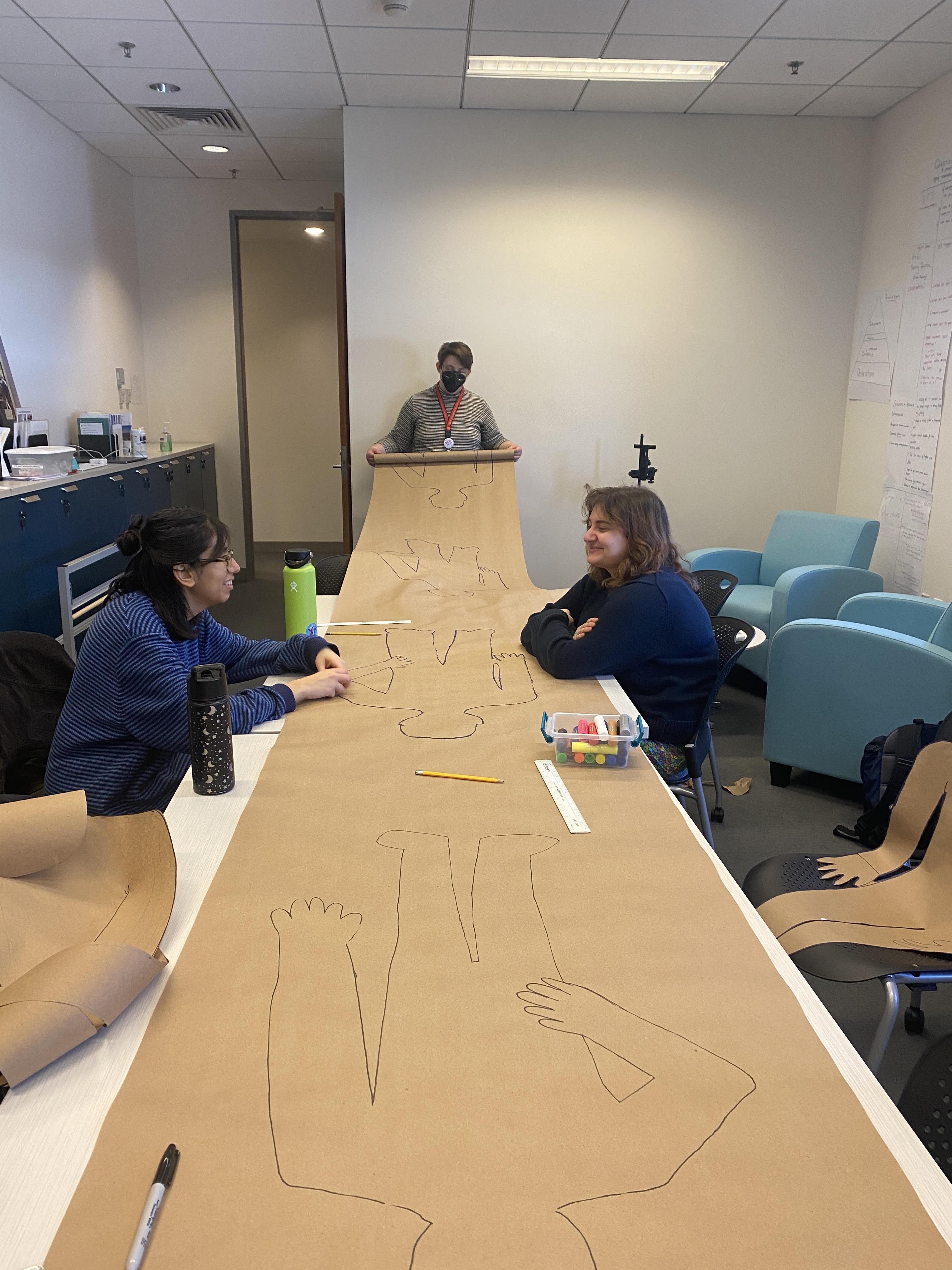
Building on this success, SCMA introduced SCMA Playdates in the spring, designed for two-to-five-year-olds and their caregivers. These sessions offered artful adventures and sensory experiences, aligning with themes that invited toddlers and preschoolers to explore art with age-appropriate experiences in the galleries, while the museum’s atrium was set up like a playgroup with educational toys, puzzles and art-making supplies. Many families make plans to meet up month after month with new and old friends at SCMA Playdates. For many families, it was their child’s first visit to an art museum, and the structured program increased caregiver comfort about being in the museum with little ones.
Both pilot programs experienced instant success, demonstrating the community’s desire for early childhood programming at SCMA. Playdates, held on Fridays from 9:30 to 11:30 a.m., were led by Gina Hall with SCMA Student Museum Educators. Additional support came from students in Brianna McMillian’s research lab in the Smith Psychology Department seeking to understand how children learn and develop language as they discover the world around them and make meaning out of new surroundings. Involving college students in our family, community and preK–12 school programs aligns with SCMA’s role as a teaching museum; our museum acts as a space of informal learning for students to observe and participate in community programming in museum education.
Overall, Playdates and Stroller Tours not only provided enriching experiences for caregivers and infants, but also fostered a sense of connection, community and collaboration within the Northampton area.
This past year, SCMA collaborated with students and student organizations on a range of programs. We piloted new approaches and strategies for deepening student engagement with SCMA’s collections, spaces and projects.
In fall 2022, we launched the Museum Advisory Collective (MAC), a volunteer opportunity for Smith students to connect with each other around art and museums while contributing to the future of SCMA. A group of more than 30 Smith students participated in monthly workshops, getting a behind-the-scenes look at projects, programs and initiatives taking place at SCMA and sharing insights that have helped shape the museum’s development. This included contributing to the museum’s third-floor reinstallation, helping select artwork for a rotation of portraits from the collection, helping shape future plans for student programming and engagement and helping our Visitor Experience team think through ways to make the museum’s spaces more welcoming and comfortable for students.

SCMA staff also worked with several student organizations to develop programs that connected students to the museum’s collections. Several programs co-created with the Asian Student Association (ASA), the Chinese Student Association (CSA), and Pan Asians in Action (PAIA) invited students into the galleries to reflect on the art on view. A group of students from CSA and PAIA came to SCMA for an afternoon screening and conversation about Chien-Chi Chang’s film Chinatown, which documents the lives of 18 Chinese families from Fujian, China, highlighting the experiences of husbands and fathers who came to New York City’s Chinatown to labor as undocumented workers. In two other programs, students from the ASA and PAIA worked with curator Yao Wu to select artwork from the SCMA collection that explored themes including duality, home and Asian and Asian American identities.The organizations invited students to view these pop-up exhibitions in the Cunningham Center and create their own art inspired by themes in the art they viewed.
Another collaboration, this one between SCMA and the Smith College radio station WOZQ 91.9 FM, yielded an exciting partnership: a program called “Art on Air.” The museum worked with WOZQ board members Emily Drennan ’23, Suzanna Strauss ’24 and Minha Virk ’25 to invite four WOZQ DJs to create original playlists inspired by the art on view in the galleries. The student DJs Jennie Matthewson ’23, Minha Virk ‘25, Kaia Austin ’25 and Lilly Watson ’25 (all of whom were also student workers at SCMA) picked specific artworks and an overarching theme as inspiration. On the day of the event, students were given a zine handout designed by student Interpretation and Program Assistant Cloud Osmond ’24, which included information about the art pieces and offered access to the playlists. Students explored the galleries while listening to music.
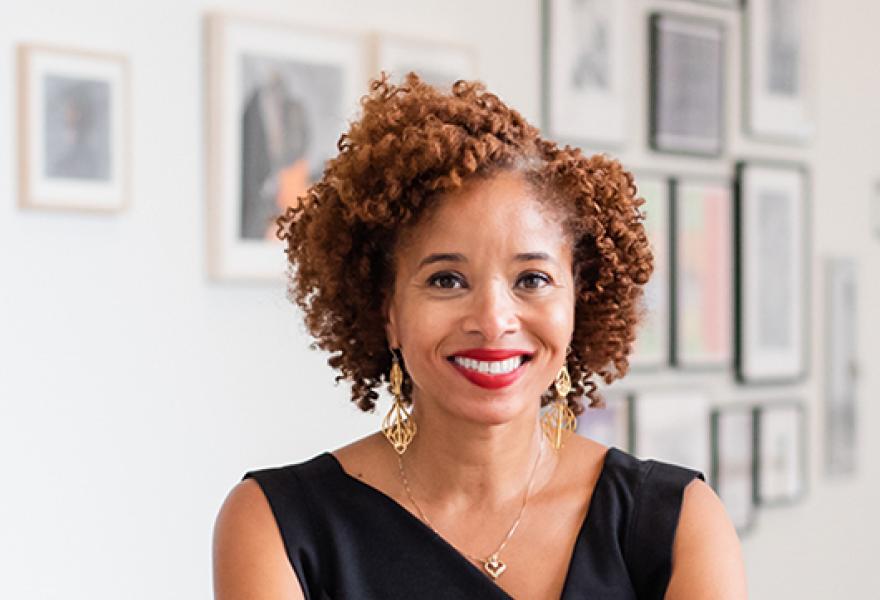
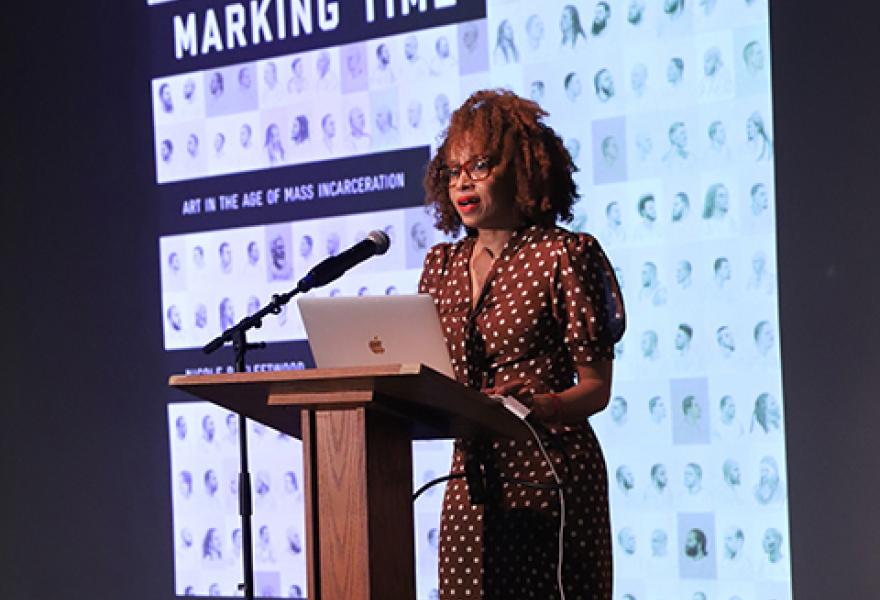
In spring 2023, celebrated writer, cultural theorist, curator and art critic Dr. Nicole R. Fleetwood joined Smith College students, staff, faculty and community members to discuss her project Marking Time, which explores the impact of U.S. incarceration on contemporary visual art. Her talk was concurrently live streamed to an international virtual audience. Dr. Fleetwood also joined students, faculty and staff for a lunchtime conversation the day after the talk.
Fleetwood’s project highlights artists who have been incarcerated alongside artists whose work examines U.S. institutions and systems of confinement. Based on interviews with currently and formerly incarcerated artists, prison visits and the author’s own family experiences with the penal system, Marking Time shows how the imprisoned turn ordinary objects into elaborate works of art.
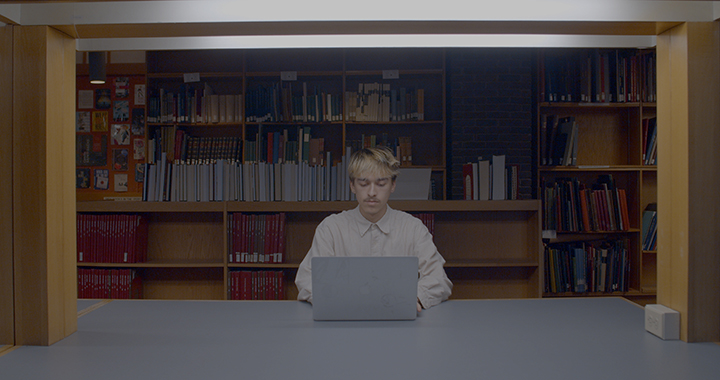
Jane Statchen ’25 (winner, “Recluse,” video )
Wells Wells ’23 (winner, “Too Much Felt,” installation)
Adriana Piantedosi ’23 (honorable mention, “Moving On,” video)
Emily Drennan, ’23 (honorable mention, “My Bed, My Body, My Blues,” installation)
Page Passantino ’23 (winner, “Triptych for St. Michael and the Dragon,” poetry)
Flora Arnsberger ’23 (winner, “Iconographic and Geologic Analyses of Jackal Headed God Anubis,” academic paper)
Benjamin Kleinman-Eddy ’23 (honorable mention, “Deceiving the Universe: A Mixtape for Liars,” installation)
top to bottom, left to right: Smith College Campus School kindergarteners engaged in a hands-on activity where they explored “drawing” shapes with lines of colorful tape on the gallery floor. Photo by Melissa Gallo; SCMA Collections Manager/Registrar Robyn Haynie facilitates close looking of objects for students in CHM 100 Chemistry of Art Objects. Photo by Charlene Shang Miller; SCMA Student Museum Educators Minha Virk ’25, Sarah Erickson ’23 and Olivia Sarno ’25 prep for a Big + Little–themed Play Date program in March 2023. Photo by Gina Hall; SMEs working the November 16, 2023, Art After Hours: Museum Mixtape Art on Air event, where art was paired with music curated by the Smith College WOZQ DJs. Photo by Nina Peláez; Writer, cultural theorist, curator and art critic Dr. Nicole R. Fleetwood. Photo Courtesy of the John D. and Catherine T. MacArthur Foundation; "Recluse" video still from 2024 Tryon Prize winner Jane Statchen ’25